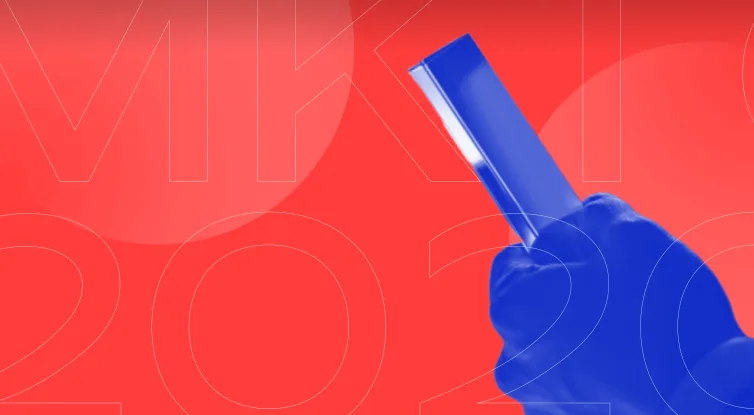Some data to kick us off: form completion rates are about 21%, with typeforms being closer over 47%.
That’s pretty good, but with zero-party data—what you collect with those forms—becoming more important, form completion rates can have a high impact on your marketing efforts.
One way to increase form conversions? Personalization.
Sure, you’re probably collecting data via forms to make the broader customer experience more personalized, but you can even personalize those very forms.
Latest posts on Tips
How? With these three ways...
Create personalization through Logic
Consumers expect a personalized experience. And more than 75% of them get frustrated when they don’t receive it. That’s true for any online experience, including surveys. You can improve your response rate—the number of people who start your form—by almost 50% by including personalization in your ask. Better still, you can improve your completion rate when you personalize the form experience itself.
When you personalize a survey, you create a tailored experience for each person filling out the form. One way to do that is with conditional or branching questions. These conditional questions allow you to get more specific insights from your audience because you personalize the question journey on the form taker’s answers to the previous question.
Here’s an example. A company that makes sunscreen asks its audience about how they like to exercise. If a form taker responds with swimming, the next question they see is about their preference for swimming in salt water, fresh water, or chlorinated pool water. If a different form taker responds that they enjoy running, the next question they see asks about running outside or on a treadmill.
At Typeform, this functionality is called Logic.
With Logic, the survey is specific to the form taker based on their answers. You can incorporate their experiences, likes, and opinions instead of only asking general questions. Here is an example of a form set up with Logic. You can see if someone says they are a cat person, the next question they get will be about cats—not dogs.
Want to see your question branches in a more linear way? Check out the Logic Map tool. It’s a great way to visualize the different paths available in your form.
Here are three ways adding Logic to your survey will help you improve your completion rate.
1. All your questions are relevant to the form taker
Shorter, more relevant surveys get more completions. As a survey creator, you walk the tightrope between asking too many questions, which can turn off your form taker, and not asking enough questions to get the information you need. That tightrope becomes more of a sidewalk when you use Logic. Form takers won’t see questions that don’t apply to them, making your survey shorter and more interesting to complete.
Many sources (including us at Typeform) suggest aiming for 10 questions or fewer. But that’s 10 questions that your individual survey taker sees. With Logic, your survey may have 15 questions total, but your form taker doesn’t see those five non-relevant questions. They only see the ones that align with their experience.
When you remove the non-relevant questions for your individual form taker, you remove the “next” fatigue—reading through a question only to realize it doesn’t apply to them. Plus, there is a little spark of joy when they see the progress bar zoom ahead, letting them know that they’re almost done.
Survey length applies to both the number of questions and the time it takes to complete. Some questions take longer than others to answer. For example, “check all that apply” questions take twice as long as a single-option answer. Personalization tools allow you to lower the total number of questions an individual sees, so you have an opportunity to use other question types and still have a short, easy-to-complete survey.
2. Your form is more engaging
There is a human on the other side of each of your forms, and you want them to know that you are listening. Almost 75% of consumers say feeling valued and understood is key to their loyalty to a brand.
Surveys are a great way to gather feedback and hear from customers, but they can sometimes appear one-sided. With Logic, you can create a feeling of a back-and-forth conversation by incorporating the form taker’s previous answers into the next question. Like a good conversation, these survey questions are more likely to engage your audience to complete the form. Giving a more personable response helps the form taker feel understood.
For example, you might send out a Net Promoter Score (NPS) survey following a purchase. After the customer submits their one-to-10 rating, the next question can reflect that number. If they score their experience as a three, your next question might say, “We’re sorry you weren’t completely satisfied with your experience. Please tell us how we can improve.”
But if they gave their experience a 9, your response might be, “We’re so excited you had an awesome experience. What did you like most?” These two options sound more human than the generic, “Why did you rate us that way?”
Personalization in your survey also helps you ask more specific questions that get to the nuance of the individual filling out the form. These questions are more interesting for the form taker, getting them to expand on their likes, dislikes, and experiences. This provides a more engaging survey experience because people enjoy talking about themselves.
3. You build trust with your audience
If you’re reaching out to a new audience with your form, they may be a little wary about sharing too much information.
By personalizing your survey, you show form takers that you’re interested in their individual experiences. Using interactive questions—through Logic—builds rapport, making your audience feel valued and more likely to be comfortable sharing personal information.
Asking interactive questions that are directly related to a form taker’s situation can also give them some insight into the relevance of the data you’re collecting. You can be extra clear about how you will use the data. Of course, as a good survey practice, your welcome screen would have provided a legal question field or information about how you will use the data they provide.
Clarity about how you’ll use the data collected is important for building trust. And trust is foundational to improving response and completion rates.
If a participant doesn’t know how an email address might be used, they may skip that question or close out of the survey altogether, especially if they don’t trust you. But you may not need to show an email disclaimer to everyone filling out your survey. If someone doesn’t want the incentive and chooses not to provide their email address, they don’t need to see the email disclaimer. You can set up Logic so only the people who provide their email addresses need to review your data policy.
Another example is a general market research survey. A few people answer *just right* and would be perfect for your latest ebook. You wouldn’t want to provide that resource to everyone because it wouldn’t be relevant to many people. Using Logic, you can provide the link to that helpful ebook only to people who respond a certain way. Giving people helpful information when they need it builds trust.
Get actionable data with personalized forms
Yes, higher completion rates mean more complete data sets. But beyond that, personalization tools like Logic allow you to really get to know your customers. You can create follow-up questions that dig into their favorites so you can understand why they feel that way. Nuanced data about your audience helps you build products and marketing campaigns that truly resonate with your customers.
Going back to our exercise example, our sunscreen company now sees their swimmers more fully—wow, we have a lot of open-water swimmers in our audience—which enables the company to understand a niche they may not have known about before.
Ready to bring more personalization into your forms? Try Logic in your next survey by clicking on Logic in the side panel. If you need help, check out this article, What is Logic?








